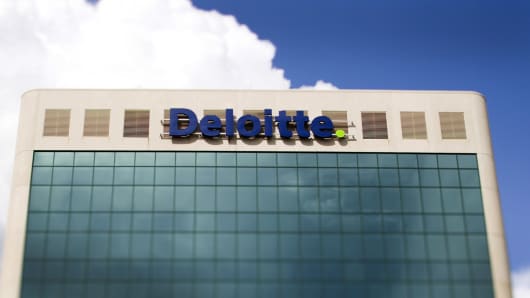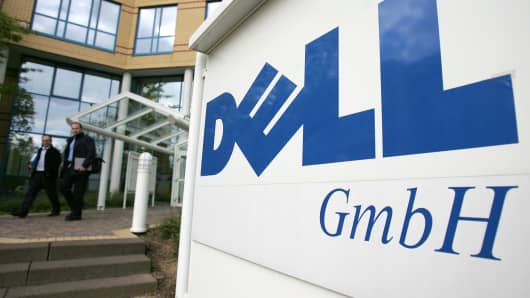
Responses
Lee Patrick
Hopefully it will be an integrated approach that ensures the government and the people of Australia begin to support Australian made. If we have little production, manufacture, agriculture, aquaculture, Australian based retail etc. , no amount of skills adaptability and sociability is going to help. Personally I don't see future proofing a career as a possibility at this point - would love to attend the talk today. Go well Bernard.
Ivan Kaye response - Lee , if these manufacturing jobs can be automated, wouldn't it be more productive for a human to be adding value to another human , or learning , or doing something that he or she was passionate about?
I believe there will be many roles that are yet to be defined that people will be able to do to become productive.
Olivia Pennie
Without a white board to scribble on, here's how we look at it @ BEcoME.
The skills needed to thrive in a constantly changing world of work will constantly evolve.
Some of the skills will change rapidly and become redundant very quickly e.g. specific technical skills related to one role. Some of the skills will be more portable, relevant to more roles and slower to change as they are the enterprising skills that allow people to work well in many of todays (and as far as we can see) tomorrow's environments e.g. collaboration, creativity, critical thinking. (See FYA New Work Mindset Report for great detailed analysis).
Adaptability, self knowledge and the skills to navigate a life of learning and course adjustments sit above all of these and help you direct your own path.
We focus specifically and explicitly on this.
The complication and confusion comes, (I think) because adaptability and a design thinking approach are also a core part of STEAM when it's done right.
Absolutely agree that if STEM is delivered as teaching all kids to code then it falls way short of what they're going to need.
Reply to Olivia
Olivia Pennie (née Hall) Bernard Salt AM Some delineation or definition might help here:
1. ‘Fact-based’ skills – many with an empirical base – that are learned in the classroom, lecture theatre and by exam: generically >‘hard’<. STEM is a relatively easy example to illustrate, but e.g. languages, literacy and numeracy should feature.
2. ‘Personal tool kit’ >soft attributes< such as sociability, adaptability or resilience that are more shaped by experience, peer groups, mentor influence, etc. and can’t generally be formally studied.
Just a non-white board shared thought bubble
Jason Furness
Adaptability and sociability become much less important really quickly if the power system fails, the sewage system ceases to exist, office buildings and houses are structurally unsafe. STEM is essential to a societies continued existence.
I believe that STEM and skills are critically important for people to "learn" - however , the focus at school and an undergrad in my view , is the ability to "learn to learn" .
Ivan Kaye comment - Stem and task related skills - much of which will be augmented or indeed replaced by machines - are still key, but maybe the best place to learn these skills is "on the job" or "in the role".
Heather Mcgowan and Chris Shipley presented at our first "conversation" on "beyond the future of work - beyond 2050" and they pointed out the need to change the paradigm of our learning system.
Before the way we lived and worked was
Learn - do (in a job ) - Produce - Retire
And a human would ideally have 1 job all his or her life.
Nowadays the average Australian Millennial will have 14 jobs over his or her lifetime - and they will need to be upskilled throughout their work life.
The model needs to change to
Learn to learn - learn/work - produce - learn/work/produce - produce x 14
I believe a key foundation to the future of work is Vocational Education (VET)
And "Jobs" should be replaced by "Roles"
Over the next 6 months - we are having a series of conversations on the future of work - and the importance of HR personnel to "lead" the future
Let me know if you want to be part of the conversation and I will send you an invite to our forum.
Reid Moule
Agreed. So if we teach how to be resilient and how to adapt as a part of teaching computational thinking, because this is the basis of STEM or STEAM, then we are also teaching the process that can be regarded as the scientific method because it is a series of steps to evaluate an outcome. The scientific method is a process (hypothesis, method/materials, data, discussion, conclusion) in the same way that the Engineering cycle is a process and the Design Cycle is a process.
Dr John Blakemore
Bernard, we need both. You can't intelligently communicate with a mathematician if you can't be logical and understand maths
Dr Nick Somolov
Barnard, I have limited social skills and have been considered by many to be "Scottish" in my conduct - read in it what you like. But I resolved that future of the employment is in owning your own business particularly by STEM people otherwise they become "battery chickens" of science and are "culled" by age 35 as I experienced in CSIRO. My company is now producing one and only high quality fibre worsted comb in Australian history. Future of work is in Scottish FU CSIRO or large gov orgs (exclude defense orgs ) that exploit science and engineering people ( making future career an MBA option ) - most engineers & scientist ( one and the same ) should operate as "law partnership" in a consultancy on all levels - that is the Future. Even the most average engineer and scientist understands a company bottom line but most MBA's find it hard to understand the science behind new products or software... let the MBA fight over our crumbs. Let the scientist and engineers create the world of tomorrow on their terms.
Reid Moule
It has always been these skills. I can remember wondering why someone with these skills and no degree was higher in the ladder in a government department. than another who was much more qualified...and...the answers is...
Steve Southon
Agree Bernard Salt AM and think personal resilience will also play a big part as working environments change around us
Luke Marshall
Stay 'relevant'...whatever that takes
John Bradshaw
We all have a lot to learn, but one conclusion is abundantly clear: in a time of rapid technological and social change, we need to innovate to promote inclusive economic growth that helps everyone move forward. This requires a shared responsibility among those in government, across the private sector, and by individuals themselves.
New technologies like 3D design modelling and simulation, virtual and augmented reality assembly and training devices, new services like metrology and laser scanning and new tools ,robotic processes and new outward facing soft skills in language, foreign culture, and social media all undoubtedly help individuals develop new abilities and connectivity with new jobs in design /manufacturing and sustainment.
Unfortunately our governments collectively have failed to articulate and demonstrate to date that the innovation agenda and the business and research models of our research institutes and universities are in any way inclusive ones.
Promotion of the STEM agenda in Australia is instead focused around University education when in fact over 30% of STEM education is actually delivered in vocational training for Trade Apprenticeships and Technician ships,




























